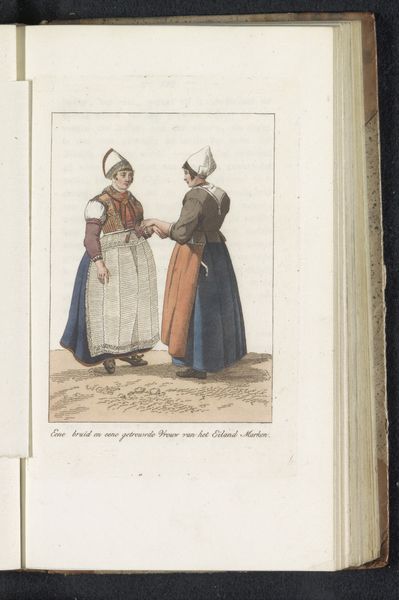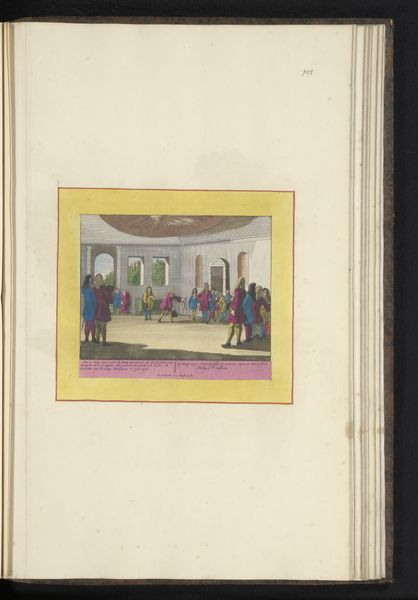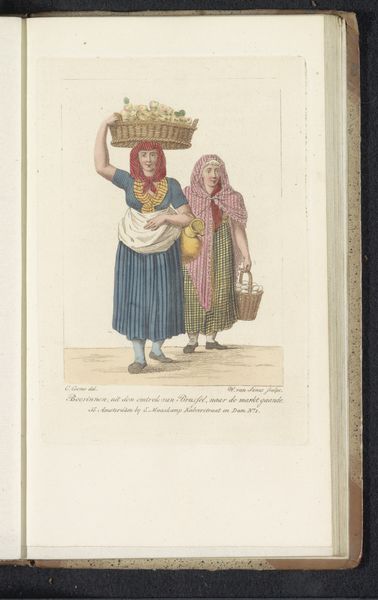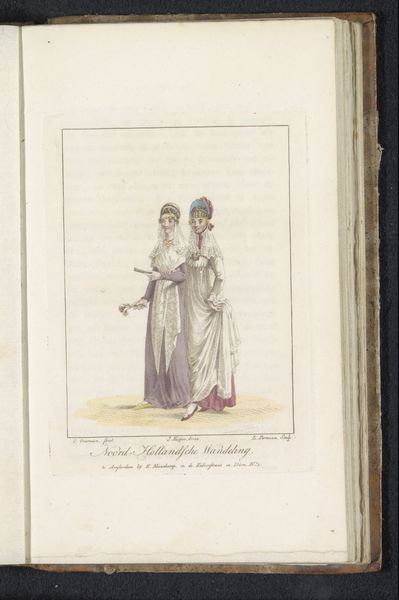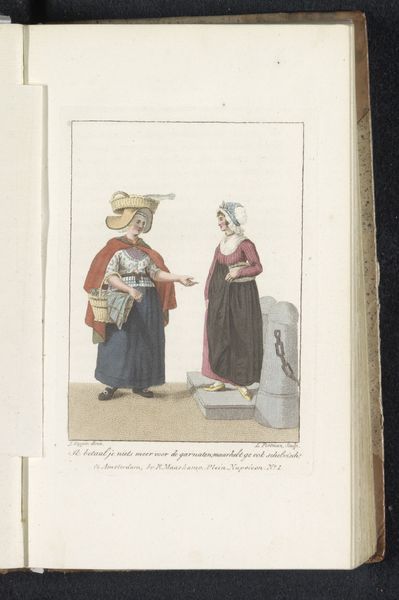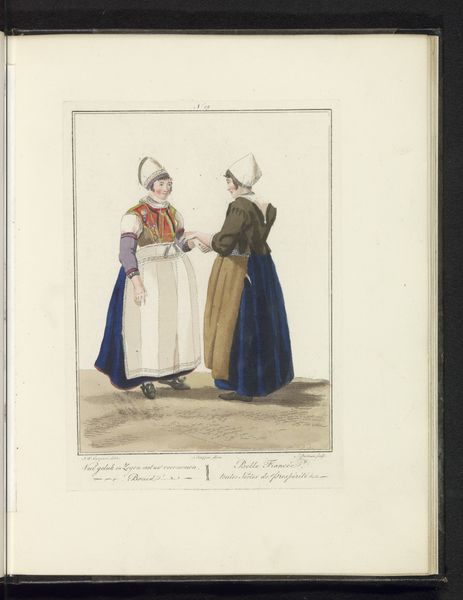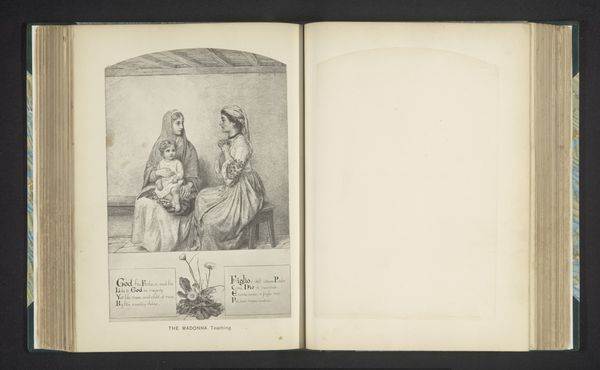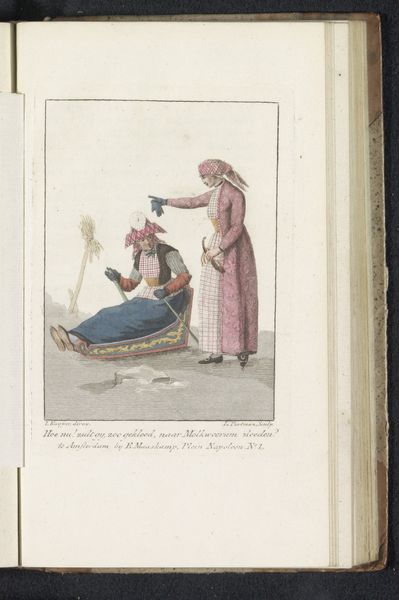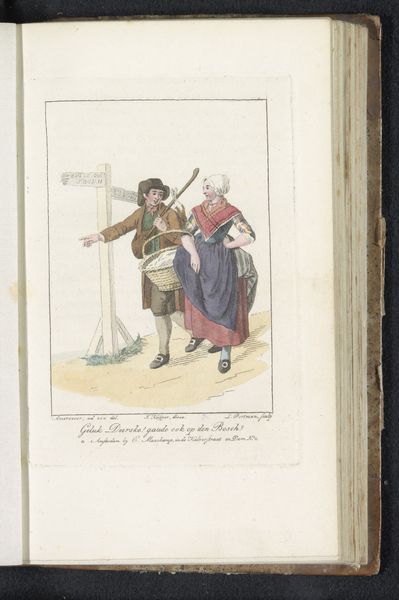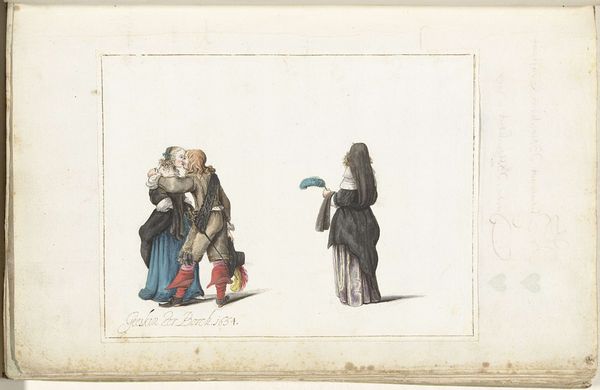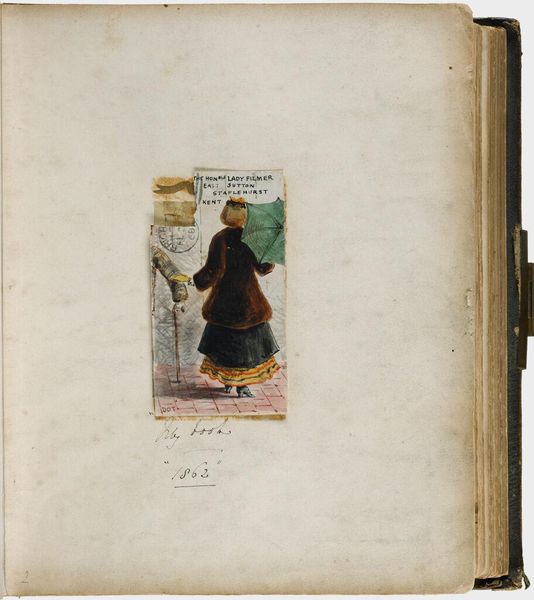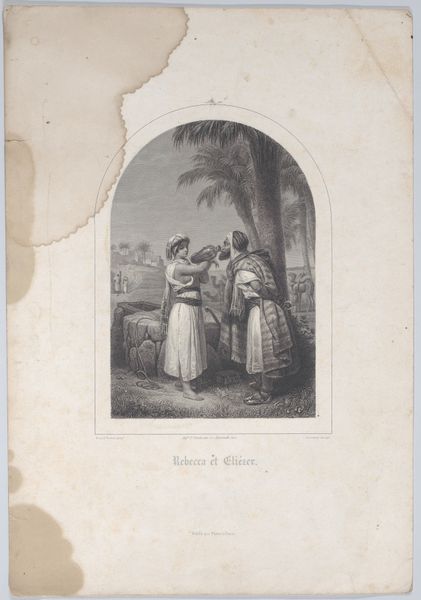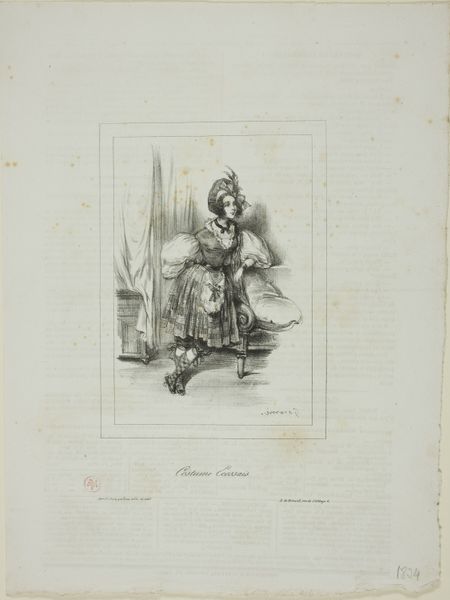
coloured-pencil
#
coloured-pencil
#
coloured pencil
#
romanticism
#
costume
#
genre-painting
#
history-painting
#
realism
Dimensions: height 132 mm, width 92 mm
Copyright: Rijks Museum: Open Domain
Curator: Welcome. Here we have "Brusselse vrouw en dienstmeid," or "Brussels woman and maidservant," crafted around 1815 using colored pencil by Willem van Senus. What strikes you immediately? Editor: There’s a subdued, almost theatrical feel to this piece. The women seem posed, their expressions fixed, and it's hard to ignore the obvious contrast in their dress. Curator: Indeed. The fashion tells a story of societal expectations and class boundaries. Consider how the Brussels woman’s darker, more concealing attire, coupled with her gloves, contrasts with the maidservant’s lighter colors and visible skin. The colors become emblems. Editor: The maidservant with her bucket also visually connects to archetypes of labor and servitude throughout art history. Is it simply an illustration of different social roles, or is something else encoded here? The symbolism of her chore is interesting too. What does the water bucket, carrying maybe new growth or the scraps? What is this container holding for us? Curator: Well, Brussels, around 1815, was in a state of flux after French rule. These distinct class markers were carefully constructed, not just reflecting, but actively reinforcing the social hierarchy after a time of revolutionary change. It is likely a time of strict reestablishment. The women almost become symbols of that very need for order, with gender intrinsically linked to their status. Editor: So, their costumes become almost like national symbols in this transitional period? Even something like the lace on the maidservant's garment? The black hood worn by the woman? There is indeed the reestablishment and continuation of Brussels’ unique cultural identity as it shifts. Curator: Exactly. Moreover, these seemingly small sartorial details are indicative of power dynamics deeply embedded in daily life. I mean, even consider the way they look at each other. Their whole carriage, in fact. Editor: I'm left contemplating how ordinary lives can become these powerful historical documents, holding echoes of political upheaval in the details of their presentation. Curator: I agree. This artwork reminds us to always read imagery closely. Everyday artifacts reflect a very turbulent society still sorting itself out. They offer unique insights that a formal record cannot.
Comments
No comments
Be the first to comment and join the conversation on the ultimate creative platform.
